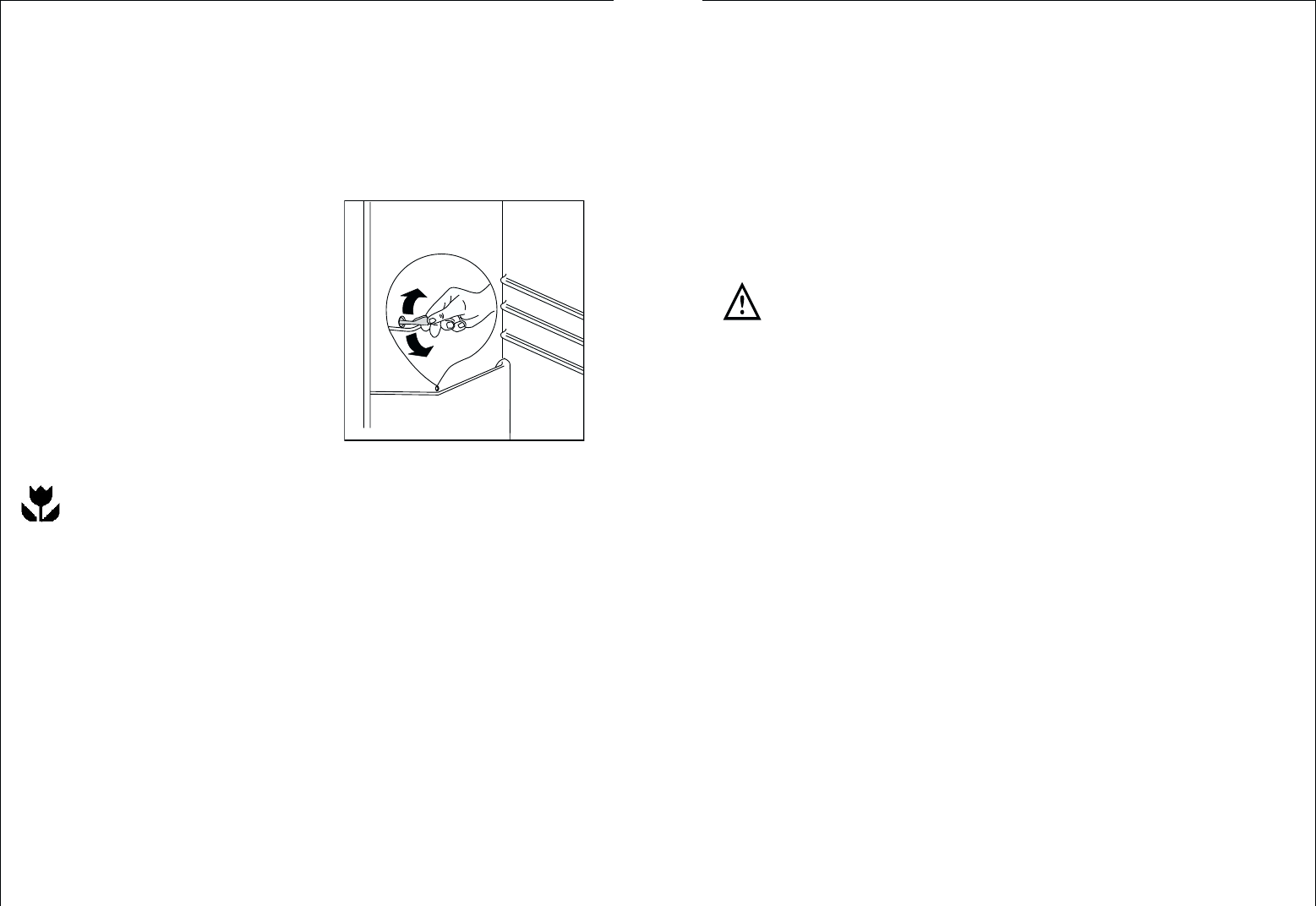
11
• Please note the maximum storage times specified by the manufacturer.
• Thawed foods which have not been processed further (cooked into meals)
may not under any circumstances be frozen a second time.
• Containers with flammable gases or liquids can leak at low temperatures.
There is a risk of an explosion! Do not store any containers with flamma-
ble materials such as, for example, spray cans, fire extinguisher refill car-
tridges etc in the refrigerator/freezer.
• Bottles and cans must not be placed in the freezer. They can burst when
the contents freeze, high carbonate content drinks can even explode!
Never store lemonade, juices, beer, wine, sparkling wine etc. in the freezer.
• All foods must be packed air tight prior to freezing, so that they do not
dry out or lose their flavour, and so that no flavour contamination of
other frozen goods occurs.
Important! Do not touch frozen food with wet hands. Your hands could
stick to the food.
1. Place the packed food in the drawers. Place food to be frozen in the upper
drawer. Unfrozen food must not touch items already frozen, otherwise the
frozen food could begin to defrost.
2. Press the fast freeze button 24 hours before introducing fresh food for free-
zing. The yellow light comes on.
3. Place frozen foods in the drawers sorted by type, as far as possible.
Ice Pack
There are two ice packs in one drawer of the freezer.
In the event of a power failure or malfunction, the ice pack will lengthen
the amount of time it takes for the frozen food to become too warm by
several hours. The ice pack can only fulfil this task efficiently if it is placed
in the uppermost drawer, at the front, above the frozen food. You can use
the ice pack for cooling cold bags.
Preparation of Ice Cubes
1. Fill the ice cube tray 3/4 full with cold water, place it in the freezer com-
partment and leave to freeze.
2. To loosen the frozen cubes, either twist the ice cube tray or hold it under
running water for a few seconds.
Important! Never try to free an ice tray that is frozen to the freezer com-
partment using pointed or sharp edged objects. Use the ice scraper supplied.
14
• Many proprietary kitchen surface cleaners contain chemicals that can
attack/damage the plastics used in this appliance. For this reason it is
recommended that the outer casing of this appliance is only cleaned with
warm water with a little washing-up liqiud added.
1. Remove frozen food and the food from the refrigerator. Wrap frozen
food in several layers of newspaper. Store it in a cool place, well covered.
2. Switch the appliance off and remove the plug from the mains, or switch off.
3. Clean the appliance and the inte-
rior accessories with lukewarm
water and with a little bicarbonate
of soda added (5ml to 0,5 litre of
water).
4. Dry the appliance thoroughly.
5. Check the water drain hole on the
rear wall of the fridge. Clear a
blocked drain hole with the aid of
the drain cleaning tool included
with the appliance.
6. When everything is dry switch the
appliance back on.
Energy Saving Tips
• Do not install the appliance near radiators or other sources of continuous
warmth. High ambient temperatures cause longer, more frequent opera-
tion of the compressor.
• Ensure sufficient air circulation at the appliance base and at the back wall
of the appliance. Never cover air vent openings.
• Do not place warm foods into the appliance. Allow warm foods to cool
first.
• Do not leave the door open any longer than necessary.
• Do not set temperature any colder than necessary.
• Put frozen food in the fridge to defrost. The cold in the frozen food will
then be used to cool the fridge.
D037














